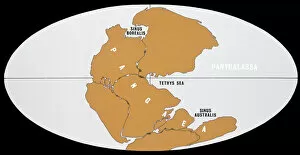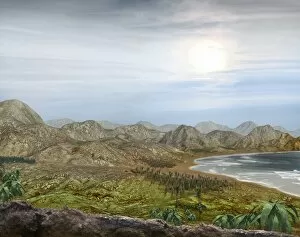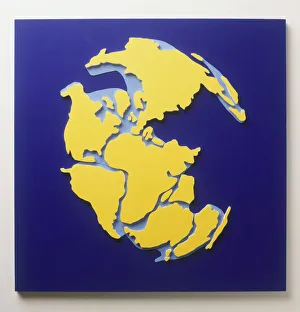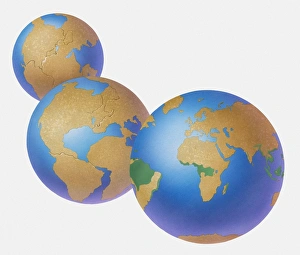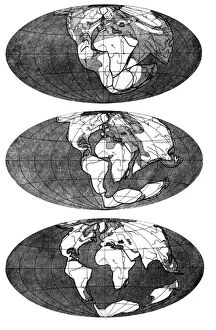"Pangaea: The Ancient Supercontinent Unveiled" Embark on a journey through time and witness the awe-inspiring phenomenon of continental drift that shaped our planet's history. In the prehistoric era, specifically during the Triassic period, Pangaea emerged as a colossal landmass uniting Earth's continents. Through a mesmerizing reconstruction of its natural environment in vibrant color lithographs from 1916, we catch a glimpse of this lost world. As Earth's supercontinents shifted over millions of years, Pangea eventually broke apart, leaving behind global maps that illustrate its fragmentation with astonishing detail. An ancient map showcases the roughly shaped landmasses during both the Paleozoic and Mesozoic eras when Pangaea reigned supreme. A captivating sequence of illustrations takes us on an enthralling visual journey depicting how our planet has transformed since Pangaea's existence. Witness the crust moving and continents breaking apart as they gradually form into their current configuration. Alfred Wegener's groundbreaking theory comes to life in an intricate illustration portraying his vision of Pangaea. His revolutionary ideas laid the foundation for understanding Earth's geological processes and forever changed our perception of our planet's past. Delve deeper into this primordial world as you encounter Semionotus (Flag-Back), an extinct genus of ray-finned fish that once roamed these ancient waters. Marvel at artwork showcasing Pangea’s prehistoric landscape teeming with diverse flora and fauna, including majestic flying insects that ruled the skies. Continental drift remains one of nature’s most fascinating phenomena, shaping not only landscapes but also life itself throughout history. Explore this captivating concept further to gain insights into Earth’s ever-evolving story – from Pangaea to today – where continents continue their slow dance across vast oceans.

